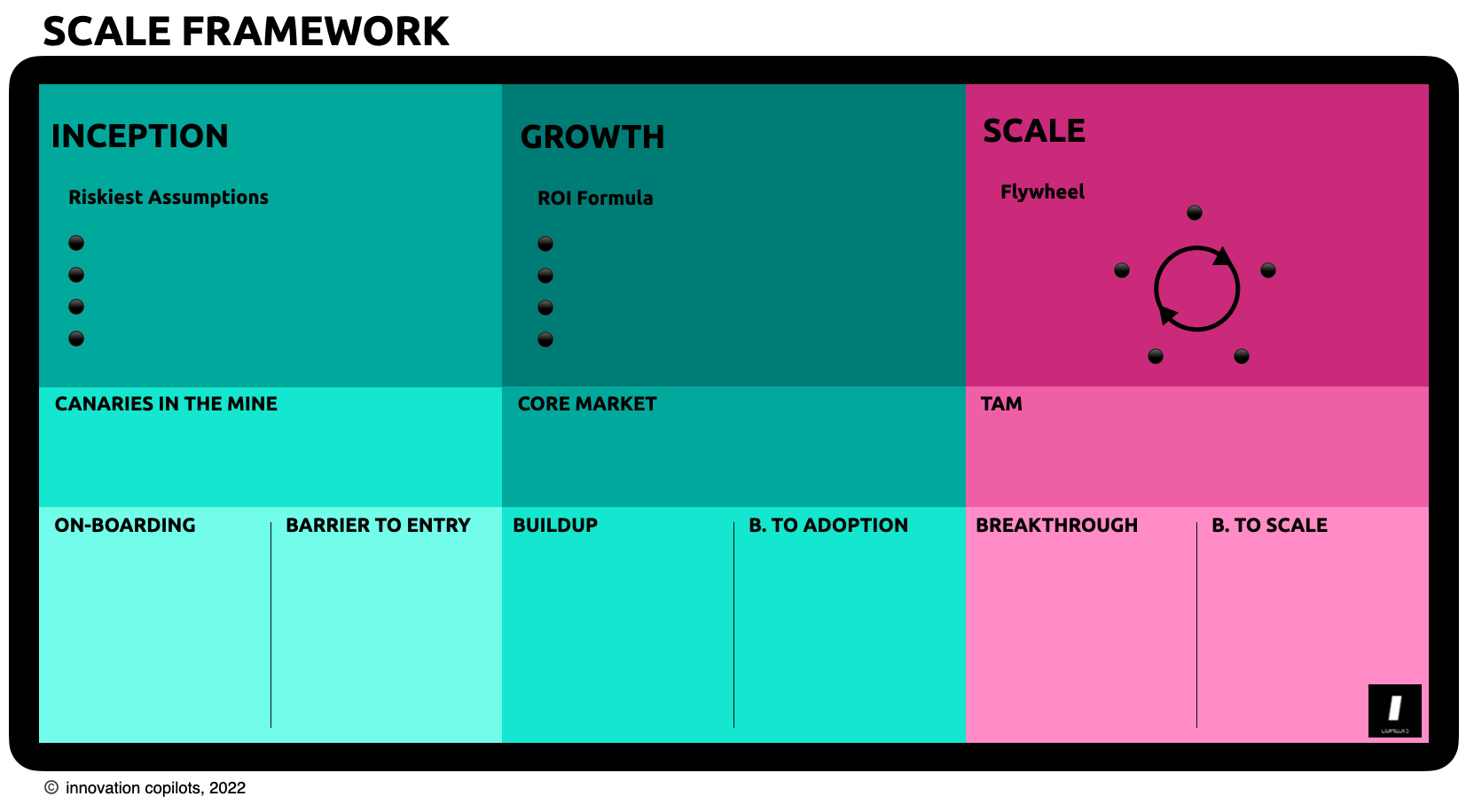From business model to flywheel effect

If you read this blog – or better, if you've been working with us – you know that we frequently rely on our innovation and culture frameworks. Both are designed to highlight the core mechanisms at play in strategizing an innovation project, connecting the dots with operations, and serving as clear internal dashboards to challenge assumptions.
Fine. But for years, I've also been involved in helping plan the next steps of the inception of an innovation in the market. And this is always non-linear endeavor; if not plain messy. The reason is that this part of the work is still not very clear for many teams, and numerous false assumptions are perpetuated over and over.
For instance, as soon as an innovation project gets clear and has resisted the first proof of concept phases, everyone gets pretty excited and very often acts as if things are going to be straightforward from now on. We can blame as long as we want the oversimplified design thinking/lean startup loops, but hell no, things are not set as soon we have some positive feedback on a prototype.
In reality, going from new business inception to real scale is akin to a triathlon where you need to perform in three very different disciplines if you want to push forward. And unless you have an exceptionally athletic team, it will require the involvement of very different stakeholders.
If I try to break it down, here are the three phases that connect as soon as your Problem / Added Value / Product equation is somehow resolved:

The first phase is the Inception of an innovation in the market. Here, the successful proof of concept (including initial tests, marker research, etc.) has to become a minimum viable business by finding the "canaries in the mine" customers. This implies working immediately on your riskiest assumptions tests (the RATs) and a few other things. To be able to transition to the next phase of work, we need to achieve tangible initial market traction (also known as "selling stuff") even if it's not profitable or scalable yet.
The second phase is Growth, where we are concerned about we can shift from useful but unreliable early adopters to a beachhead in the core market. The value proposition that is at this point well-defined has to be crystal clear in terms of both tangible and intangible customers' ROIs. It's frequently at this point that projects gel together or unravel.
Finally, the third phase is all about Scale. We now have a new promising innovative business (congratulations), but can we put it on an acceleration track and make it a significant success or not? This phase is of utmost importance when we're dealing with digital businesses that need to reach critical mass to unlock their potential spectacular cost-efficiency.
At this late stage, the core discussion is about creating a flywheel effect and not spinning out in a doom loop (yes, I'm quoting Jim Collins' Good to Great).

There are always many steps involved in translating a best practice into a tool that others can use. But I'll try to keep you posted, and if some of you want to play with this contact me 😎




